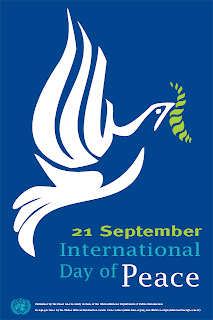Saturday, November 28, 2009
Why was the United Nations formed?
You must have heard of the UN or the United Nations, but do you know what it is, and why it was formed? The United Nations is an international organization of countries created to promote world peace and cooperation. The seeds of the United Nations were sown a many years earlier in other organization called the League of Nations . It was formed after world war I, to ensure that in future, nations would settle all disputes peacefully without going to war. The League of Nations failed in this objective, and the world had to suffer another world war in 1939. The reason for the League’s failure was that many powerful states, including Russia USA
The UN was founded after world war II ended in 1945. It is mission is to maintain world peace, develop good relations between countries promote cooperation in solving the world’s problems and encourage respect for human rights.
The UN is an organization of countries that agree to cooperate with one another. It brings together countries that are rich and poor, large and small, and have different social and political systems. Member Nations pledge to settle they are disputes peacefully, to refrain form using force or threat of force against other countries, and to refers help to any country that opposes UN actions.
UN membership is open to any country willing tin future the UN missions and abide by its rules. Every member countries expected to pay due to support the UN. As of 2007, the UN had 192 members, including nearly every country in the world.
Subscribe to:
Post Comments (Atom)
Bhuvan mapping
DOWN LOAD Bhuvan mapping
A review of ISRO Bhuvan Features and Performance
download bhuvan mapping.............. here
Here is a frank review of the features and performance of ISRO Bhuvan (the much anticipated satellite-based 3D mapping application from ISRO) BETA Release and comparing it to supposed arch rival Google Earth. Bhuvan from the begining is claiming that it is not competing with Google Earth in any way, but there was much hype and propaganda in the media saying that ISRO Bhuvan will be a Google Earth killer atleast in India. But it looks like that can nit be the case anytime soon. Here is why..
- While Google Earth works on a downloadable client, Bhuvan works within the browser (only supports Windows and IE 6 and above).
- The ISRO Bhuvan currently has serious performance issues. The site currently very unstable. It gives up or hangs the browser every once in a while. When a layer (state, district, taluk, etc.) is turned on, it renders unevenly and sometimes fails to render at all. The navigation panel failed to load routinely and it felt like a rare sighting when we could actually use the panel.
- The promise of high resolution images has not been kept. While the service promises zoom up to 10 metres from the ground level as against 200 metres for Google Earth, we didn’t encounter a single image with nearly as much detailing. In fact, comparative results for a marquee location such as New Delhi’s Connaught Place or Red Fort make its clear as to the inferior performance of ISRO Earth as of now.
- The navigation tools are similar to Google Earth (GE).
- The search doesn’t work if a query returns multiple results. A pop up window is supposed to give the multiple results from which the user is supposed to be able to choose. During two days of sporadic testing, we found the result only once. The rest of the time, the window would pop up, but nothing would be displayed. When the search is accurate, the software ‘flies in’ to the exact location, the same way as GE.
- Users need to create an account and download a plug-in.
- Bhuvan packs a lot of data on weather, waterbodies and population details of various administrative units. We were unable to access weather data. Clicking on icons of administrative units show basic information such as the population. For specialist users, Bhuvan might hold some attraction. For instance, there is a drought map which cab be used to compare drought situation across years and there is a flood map that shows Bihar during the Kosi flood and after. With Isro backing, Bhuvan would be able to provide such relevant data from time to time, but the application needs major improvements in terms of usability before it will be of interest to the ordinary user.
- Users can also not edit any data or tag locations.
- We hope Bhuvan is able to fix the bugs soon. But even then, to be a credible alternative to existing mapping services, and even to get new users to try it, it much provide much higher resolution images. User interest will be piqued only when they can see their house or school or local street in high resolution. With Isro data, this is easily doable.
Having said all this, ISRO Bhuvan is still a very good step forward for ISRO in the right direction we feel. We wish all the best for ISRO and hopefully Bhuvan will mature very fast to become a good service and can really compete with Google Earth.
















No comments:
Post a Comment